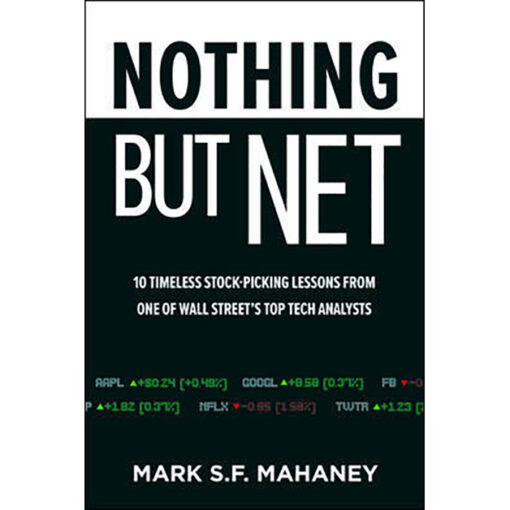[ad_1]
The Enduring Value of Roger Murray. 2022. Paul Johnson and Paul D. Sonkin. Columbia Business School Publishing.
Who among us does not know the contributions of Benjamin Graham and David Dodd to security analysis, as well as their disciplined approach to long-term investing? After reading and thoroughly enjoying The Enduring Value of Roger Murray, I now understand that Roger Murray represents a dynamic successor to them in practicing fundamental analysis with an emphasis on uncovering the intrinsic value of the stock at hand. This fresh look at a great investment personality of the last millennium restores one’s confidence in fundamental analysis — and especially value investing. It also underscores how sticking with one’s convictions in all aspects of work and life can leave a lasting impact beyond one’s own lifetime.
The authors present this book in a congenial way, acquainting the reader with Roger Murray’s professional and personal life and then introducing him in his own voice in four lectures, as well as a 1996 interview by Peter Tanous that took place the year before he died at the age of 86. Both authors have backgrounds that enhance their work on this investment master. Paul Johnson has taught security analysis and value investing at Columbia Business School for more than 30 years, and Paul D. Sonkin was a portfolio manager at Mario Gabelli’s GAMCO Investors, Inc., also serving as an adjunct professor at Columbia Business School.
Murray strikes me as a rational thinker who could approach any problem with an open mind. The biographical section of the book highlights this strength during his undergraduate years at Yale, where he achieved awards at a young age in literary research and analysis. What drew Murray to business and economics during the Great Depression was marriage. Although he wanted to become a teacher, he realized he would need a better income to support his family.
Early in his career at Bankers Trust, Murray discovered his passion for investing and his call to work in investment management. By the age of 39, he was named head of the economic and business research department and simultaneously given the responsibility to manage institutional portfolios. Murray’s primary concern in investing post–World War II was that the returns for fixed income would fall behind the returns he anticipated for equities. At this time, fixed income provided the main source of investment return for both individual and institutional investors.
Murray took a retirement of sorts when he left Bankers Trust for Columbia Business School in 1954. His dream of becoming a teacher was about to come true, even though his work at Columbia was initially administrative. As an adjunct professor, he was able to teach only a single class — which happened to be Advanced Security Analysis, initially taught by Ben Graham who planned to retire in 1956. With Murray’s extensive experience in investment management, he brought a sense of excitement and purpose to all the classes he taught over two decades at Columbia. After his departure, the school’s excellent program in value investing was not actively nurtured until it was recultivated in the 1990s with the founding of The Heilbrunn Center for Graham & Dodd Investing.
After 10 years at Columbia Business School, Murray took a sabbatical and began working at TIAA (later along with CREF) as vice president and economist, leading its investment operation. At that time, he noted that the returns from college endowments lagged the growth rate in operating budgets. As a remedy, Murray invested conservatively in equities with a multi-decade timeframe based on his bullish outlook for the US economy.
Overarching his 30 years in investing and teaching, Murray stimulated widespread interest in investing for retirement, not only in pension plans but also in Keogh and IRA plans. He assisted US Representative Eugene Keogh in his efforts to pass a retirement plan for self-employed workers, and he worked to get the IRA into the 1974 ERISA. His 1968 comprehensive study of the effects of pension plans on savings and investment for the National Bureau of Economic Research (NBER) was a major part of the IRA effort.
Murray’s thoughts are summarized impeccably in the four lectures he presented at the Museum of Television and Radio in New York City in early 1993, sponsored by Gabelli Asset Management Company. In these lectures, the reader “hears” his voice, understands his reasoning, and gets a few hearty laughs. Murray addresses numerous topics that emphasize critical issues investors face, including earning power and its sources, intrinsic value, cash flow versus reported earnings, and inflation in valuation. Readers will also enjoy the Authors’ Notes throughout the lectures; their analysis makes the lectures seem as if they were given recently, not 30 years ago.
In addition to keen insights on fundamental investing, readers receive a special treat as the book begins when they are introduced to Murray’s family. The Murrays were a hard-working, close-knit family that valued education and strong commitment to productive work. The big surprise to me was learning about his older sister, Grace Hopper, fondly known as Grandma COBOL. She wrote the industry’s first software compiler in 1952.
My only critique of this excellent book is that it lacks an index. I was put on the spot when a colleague asked me a specific question about Bruce Greenwald. I also unsuccessfully sought a quick look-up on Murray’s quote: “I’ve got a deal you can’t refuse!”
This excellent tribute to Roger Murray and his enduring value will delight seasoned investment professionals and those who are just beginning their careers in investment research and management. For the more mature practitioner, it highlights the importance of thoughtfully considering the pricing versus the intrinsic value of securities in managing assets. For the student or younger practitioner, it extols the joy and satisfaction of loving one’s work and profession over a long and rich career. For all, it sheds great light on the investment management industry’s evolution over the past 90 years — and how one luminous individual contributed so much to it.
If you liked this post, don’t forget to subscribe to the Enterprising Investor.
All posts are the opinion of the author. As such, they should not be construed as investment advice, nor do the opinions expressed necessarily reflect the views of CFA Institute or the author’s employer.
Professional Learning for CFA Institute Members
CFA Institute members are empowered to self-determine and self-report professional learning (PL) credits earned, including content on Enterprising Investor. Members can record credits easily using their online PL tracker.
[ad_2]
Source link









 Bitcoin
Bitcoin  XRP
XRP  Tether
Tether  USDC
USDC  Lido Staked Ether
Lido Staked Ether  Dogecoin
Dogecoin  LEO Token
LEO Token